sunken beans Learn more about sunken beans
-
How do you tell the difference between floating beans and sunken beans in coffee cherries?
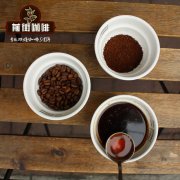
Professional coffee knowledge exchange more coffee bean information Please pay attention to the coffee fruit picked by the coffee workshop (official Wechat account cafe_style) from the coffee field. It must be sent to the processing plant immediately on the same day to remove the immature small fruit, immature green fruit, ripe black fruit, and retain the ripe red fruit. The simplest and most effective method is to pour all the fruit into a large sink and ripen.
2018-06-29 Coffee cherries floating beans sunken beans how distinction specialty coffee knowledge communication -
What is the reason for the sinking in the middle of hand-made coffee after steaming | A brief analysis of the sunken pit formed by hand-made coffee
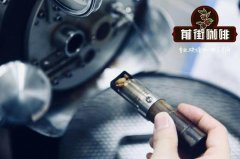
Professional coffee knowledge exchange more coffee bean information please follow the coffee workshop (Wechat official account cafe_style) Yes, we all like hand-brewed coffee! Hand-made coffee has infinite charm, not only in a ceremonial process, but also in the happiness brought to us by hand-made good coffee, just like the hand.
2022-10-28 Hand brewing coffee steaming middle sinking what is it cause analysis formation depression -
What is the honey treatment of coffee beans? coffee beans are washed in the sun.

Coffee beans are treated with wet planing what is the honey treatment coffee beans are washed in the sun, whether on small coffee farms or slightly larger coffee farms, all coffee in Indonesia is picked by hand. After picking, it is customary to soak in water to see the rough screening of ups and downs: the sunken coffee fruit is left behind, sundries floating on the water and green fruit are screened and then fermented. Fermentation in water washing method
2016-12-19 Coffee beans treatment way wet plane what is it sun washing coffee beans -
Flavor characteristics of Brazilian coffee beans in Brazilian half-sun treatment story of Brazilian coffee beans
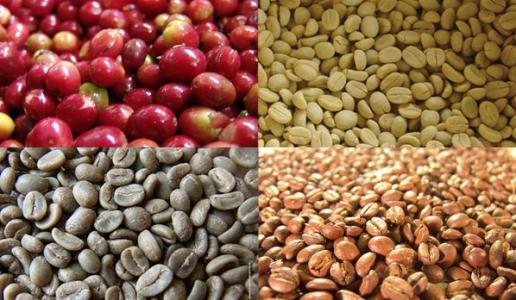
Description of flavor acidity of sun treatment and Brazilian half-sun A brief introduction to the acidity of coffee fields in Brazil, most of them are harvested mechanically in order to achieve economic benefits. When 75% of the coffee fruit in the coffee garden turns red, it starts to be harvested mechanically, followed by the same pre-operation of washing, moving into the sink to remove the floating beans, sifting out the sunken beans, and then using a large pulp screening machine to dig out the pulp and take it out.
2017-01-09 Solarization treatment Western style Flavor description Taste acidity introduction Solar -
Characteristics of quality, taste and flavor description of half-sun red bourbon El Salvador Himalayan coffee

The coffee fields of El Salvador Himalayan coffee beans are endless and are mostly harvested mechanically in order to achieve economic benefits. When 75% of the coffee fruit in the coffee garden turns red, mechanical harvesting is started, followed by the same pre-washing operation, which is moved into the sink to remove floating beans, sift out the sunken beans, and then use a large pulp screening machine to dig out the pulp and remove the pods covered with pectin. The next stage is related to
2016-10-20 Sun Red Wave El Salvador Himalaya Coffee quality Taste Flavor description -
Coffee processing sun-dried bean flavor Ethiopia Sidamo Sidamo Guji Shaqi
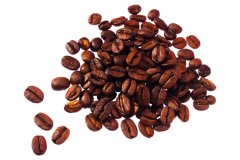
Tanning is a traditional method for the initial processing of coffee beans, and at present, almost all coffee-growing countries such as Ethiopia and Yemen still use solarization to treat raw beans. Sun treatment will first identify sunken beans in the sink, that is, ripe or half-ripe beans are spread in the drying farm for natural drying. The specific time depends on the local climatic conditions, which usually takes two to four weeks.
2016-04-14 Coffee processing way Solar beans Flavor Ethiopia Dharma Sid -
Sun treatment of Primary processing of Fine Coffee beans

Tanning is a traditional method for the initial processing of coffee beans, and at present, almost all coffee-growing countries such as Ethiopia and Yemen still use solarization to treat raw beans. Sun treatment will first identify sunken beans in the sink, that is, ripe or half-ripe beans are spread in the drying farm for natural drying. The specific time depends on the local climatic conditions, which usually takes two to four weeks.
2014-11-14 Coffee knowledge boutique coffee beans processing sun drying -
Indonesian coffee

The mellow thickness of Asian coffee is higher than that of Central and South American and African beans, but its sour taste is lower, with slightly sunken wood, herb, spice and earthy flavor, and its low and stuffy aroma is higher than that of rising sour flavor.
2014-08-18 Coffee knowledge Indonesian coffee coffee producing area coffee beans -
A brief introduction to the treatment of raw coffee beans
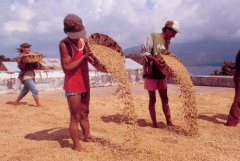
Tanning is a traditional method for the initial processing of coffee beans, and at present, almost all coffee-growing countries such as Ethiopia and Yemen still use solarization to treat raw beans. Sun treatment will first identify sunken beans in the sink, that is, ripe or half-ripe beans are spread in the drying farm for natural drying. The specific time depends on the local climatic conditions, which usually takes two to four weeks.
2014-09-23 Coffee knowledge coffee bean treatment tanning method -
Boutique coffee Indonesian coffee flavor

The mellow thickness of Asian coffee is higher than that of Central and South American and African beans, but its sour taste is lower, with slightly sunken wood, herb, spice and earthy flavor, and its low and stuffy aroma is higher than that of rising sour flavor. At the end of the 17th century, the Dutch East India Company transplanted Indian Arabica trees (Tibica) to Jakarta, Java. Due to the suitable climate and soil, Arabica quickly spread to Sumanda, Java.
2015-03-09 Boutique coffee Indonesia flavor Asia thickness Central and South America Africa beans -
How coffee beans are treated the difference between sunburn and washing
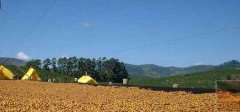
Communication of professional baristas Please pay attention to the Coffee Workshop (official Wechat account cafe_style) Sun treatment will first identify the sunken beans in the sink, that is, ripe or half-ripe beans will be spread in the drying farm for natural drying. The specific time depends on the local climatic conditions, which usually takes two to four weeks. When the moisture of the coffee bean is reduced to 12%, then use a sheller to grind off the dry and hard.
2017-10-27 Coffee beans how to handle insolate wash distinguish professional coffee communication attention -
The method of taking beans in the sun for the primary processing of coffee beans

Tanning is a traditional method for the initial processing of coffee beans, and at present, almost all coffee-growing countries such as Ethiopia and Yemen still use solarization to treat raw beans. Sun treatment will first identify sunken beans in the sink, that is, ripe or half-ripe beans are spread in the drying farm for natural drying. The specific time depends on the local climatic conditions, which usually takes two to four weeks.
2014-11-22 Coffee knowledge coffee bean processing solarization -
The Primary processing of Coffee beans Coffee beans are treated by the sun method.

Tanning is a traditional method for the initial processing of coffee beans, and at present, almost all coffee-growing countries such as Ethiopia and Yemen still use solarization to treat raw beans. Sun treatment will first identify sunken beans in the sink, that is, ripe or half-ripe beans are spread in the drying farm for natural drying. The specific time depends on the local climatic conditions, which usually takes two to four weeks.
2015-10-15 Coffee beans primary processing extraction solarization treatment tradition coffee beans -
The method of taking beans and sun treatment in the primary processing of coffee beans

Tanning is a traditional method for the initial processing of coffee beans, and at present, almost all coffee-growing countries such as Ethiopia and Yemen still use solarization to treat raw beans. Sun treatment will first identify sunken beans in the sink, that is, ripe or half-ripe beans are spread in the drying farm for natural drying. The specific time depends on the local climatic conditions, which usually takes two to four weeks.
2015-03-20 Coffee beans primary processing extraction solarization treatment tradition coffee beans -
The method of taking beans and sun treatment in the primary processing of coffee beans

Tanning is a traditional method for the initial processing of coffee beans, and at present, almost all coffee-growing countries such as Ethiopia and Yemen still use solarization to treat raw beans. Sun treatment will first identify sunken beans in the sink, that is, ripe or half-ripe beans are spread in the drying farm for natural drying. The specific time depends on the local climatic conditions, which usually takes two to four weeks.
2015-06-06 Coffee beans primary processing extraction solarization treatment tradition coffee beans -
The method of taking beans and sun treatment in the primary processing of coffee beans

Tanning is a traditional method for the initial processing of coffee beans, and at present, almost all coffee-growing countries such as Ethiopia and Yemen still use solarization to treat raw beans. Sun treatment will first identify sunken beans in the sink, that is, ripe or half-ripe beans are spread in the drying farm for natural drying. The specific time depends on the local climatic conditions, which usually takes two to four weeks.
2015-09-14 Coffee beans primary processing extraction solarization treatment tradition coffee beans -
The sun method of raw coffee beans introduces the ratio of coffee powder to water.
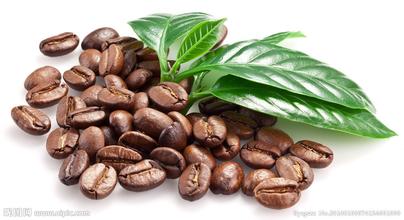
Tanning is a traditional method for the initial processing of coffee beans, and at present, almost all coffee-growing countries such as Ethiopia and Yemen still use solarization to treat raw beans. Sun treatment will first identify sunken beans in the sink, that is, ripe or half-ripe beans are spread in the drying farm for natural drying. The specific time depends on the local climatic conditions, which usually takes two to four weeks.
2016-06-12 Coffee raw beans solarization introduction tradition coffee beans primary processing methods items -
The method of extracting coffee beans from the primary processing of coffee beans by sun treatment

Tanning is a traditional method for the initial processing of coffee beans, and at present, almost all coffee-growing countries such as Ethiopia and Yemen still use solarization to treat raw beans. Sun treatment will first identify sunken beans in the sink, that is, ripe or half-ripe beans are spread in the drying farm for natural drying. The specific time depends on the local climatic conditions, which usually takes two to four weeks.
2014-12-30 Coffee beans primary processing extraction methods solarization treatment tradition coffee beans -
The sun drying method of coffee beans what are the requirements for the weather and climate of coffee?

Coffee drying method: how should coffee beans be dried? what should coffee beans do to the sun? how should coffee beans be dried in order to make a good coffee bean? first of all, the sunken beans identified in the sink, that is, ripe or half-ripe beans are naturally dried in the bean drying farm. The specific time depends on the local climatic conditions, which usually takes two to four weeks. When the moisture content of coffee beans decreases
2016-05-27 Coffee beans sun method coffee weather climate what requirements -
How about Indonesian coffee? What is the quality of Indonesian coffee? What is the real seal?

The mellow thickness of Asian coffee is higher than that of Central and South American and African beans, but its sour taste is lower, with slightly sunken wood, herb, spice and earthy flavor, and its low and stuffy aroma is higher than that of rising sour flavor. At the end of the 17th century, the Dutch East India Company transplanted Indian Arabica trees (Tibica) to Jakarta, Java. Due to the favorable climate and soil, Arabica quickly spread to Sumatra in Java.
2016-03-16 Indonesia coffee how quality what real Asia thickness
